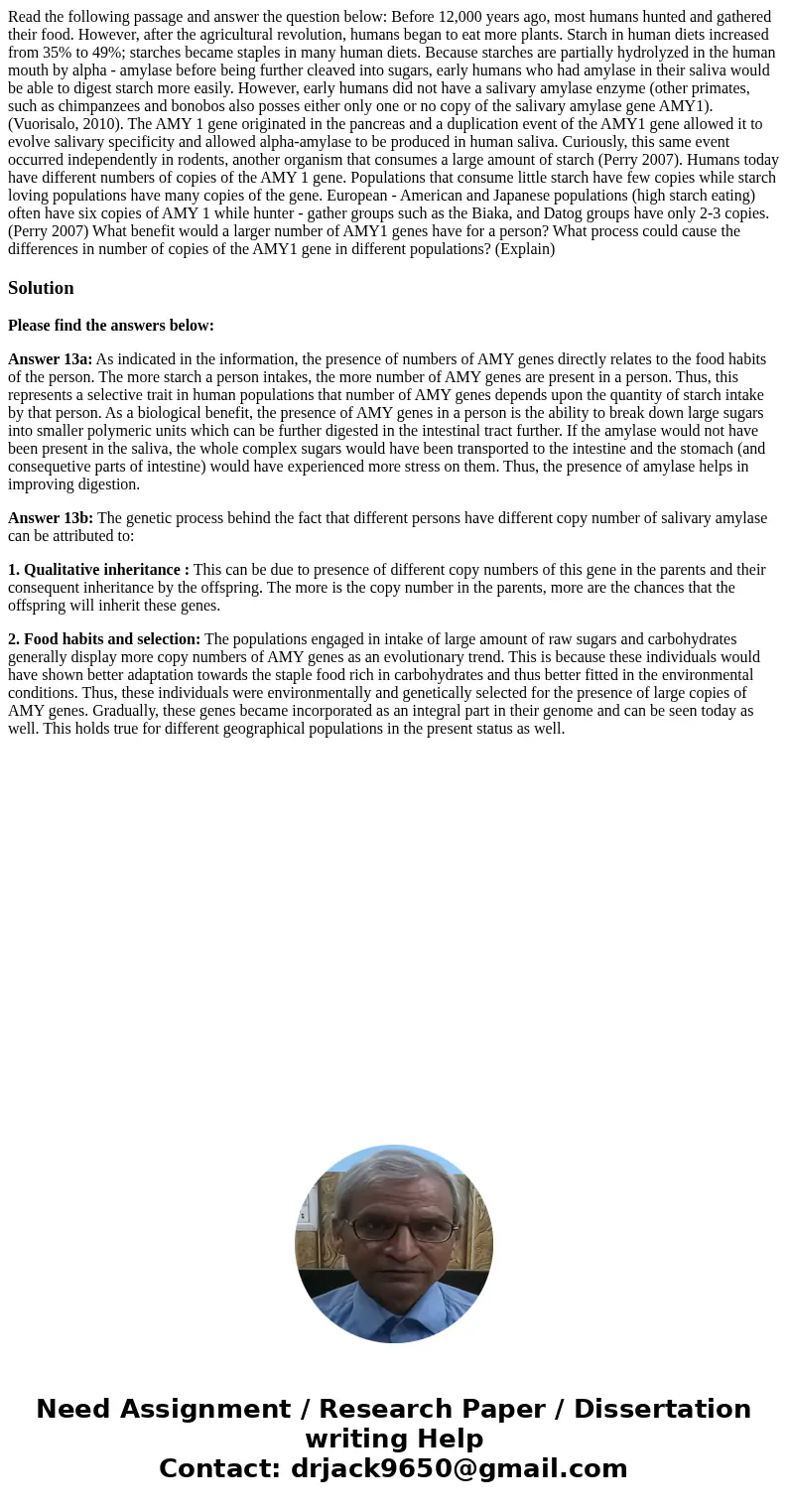Read the following passage and answer the question below Bef
Solution
Please find the answers below:
Answer 13a: As indicated in the information, the presence of numbers of AMY genes directly relates to the food habits of the person. The more starch a person intakes, the more number of AMY genes are present in a person. Thus, this represents a selective trait in human populations that number of AMY genes depends upon the quantity of starch intake by that person. As a biological benefit, the presence of AMY genes in a person is the ability to break down large sugars into smaller polymeric units which can be further digested in the intestinal tract further. If the amylase would not have been present in the saliva, the whole complex sugars would have been transported to the intestine and the stomach (and consequetive parts of intestine) would have experienced more stress on them. Thus, the presence of amylase helps in improving digestion.
Answer 13b: The genetic process behind the fact that different persons have different copy number of salivary amylase can be attributed to:
1. Qualitative inheritance : This can be due to presence of different copy numbers of this gene in the parents and their consequent inheritance by the offspring. The more is the copy number in the parents, more are the chances that the offspring will inherit these genes.
2. Food habits and selection: The populations engaged in intake of large amount of raw sugars and carbohydrates generally display more copy numbers of AMY genes as an evolutionary trend. This is because these individuals would have shown better adaptation towards the staple food rich in carbohydrates and thus better fitted in the environmental conditions. Thus, these individuals were environmentally and genetically selected for the presence of large copies of AMY genes. Gradually, these genes became incorporated as an integral part in their genome and can be seen today as well. This holds true for different geographical populations in the present status as well.

 Homework Sourse
Homework Sourse